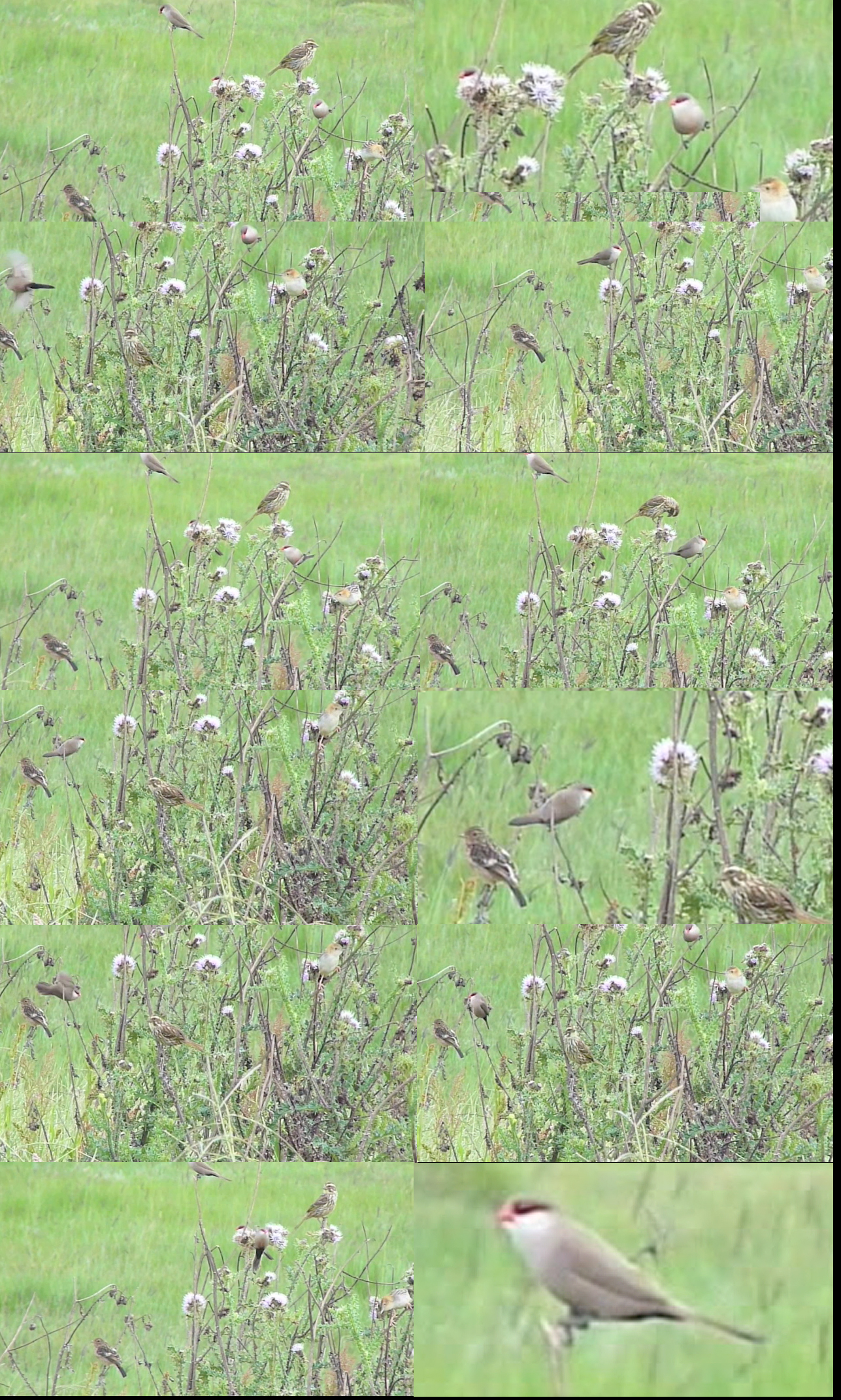From: Brian Finch <birdfinch@gmail.com>
Date: 2016-11-19 22:57
Subject: WAXBILLS ABOVE MOLO
Dear All,
This is a very odd one. I was going through filing my videos of
Aberdare Cisticolas whilst it was raining outside. Whilst looking at a
mobbing situation from the alpine grassland above Molo (where the
Sharpe’s Longclaws and Aberdare Cisticolas are west of the Rift) I
noticed something very odd amongst the birds gathered. They were the
Cisticola, Stonechat, Streaky Seedeaters and three waxbills, and it
was the waxbills that were looking odd. I don’t know how I could not
have noticed it whilst I was videoing the group, but I was
concentrating on the Aberdare Cisticola, and also whatever the subject
of the mobbing was, which I was not to see. The waxbills I must have
mentally dismissed as young Commons, but now I can see that there are
features that are a bit odd. The most obvious being that the eye-line
is blackish not bright red. Even young Common Waxbills with browner
bills still have reddish eye-lines. All the birds were the same and
all had red bills. Common Waxbills bill colour is quite the same as
the eye-line, just a sweep of all red. I have attached images of the
birds at different angles, and facing different directions, and no
matter what, the bill is clearly red, and the eye-line blackish, it
cannot therefore be any trick of the light, or a partially shaded
area.
The next feature is that they are cold grey above with the tail the
same grey, and whitish below. Common Waxbills are brown above, and
brown sometimes tinged reddish underneath. Finally although the video
grabs are not in great detail, the birds look completely unbarred. The
patterning shows well on the Streaky Seedeaters, Stonechat and the
Cisticola, so had barring been present on the upperparts, underparts
or tail as in Common Waxbill I would have expected it to show.
Although one perched bird shows very black sharply demarcated black
vent and undertail coverts, another bird in flight shows not only
black vent and undertail coverts but the entire undersurface of the
tail.
So has anyone else seen waxbills resembling these in the Molo area, or
anywhere for that matter? Better still has anyone photographed them?
I am at a loss why three almost identical adult waxbills all show the
same differences from normal Common Waxbills. It isn’t a one-off
aberration.
Something to think about, I look forward to any ideas that may be forthcoming,
Best to all
Brian

